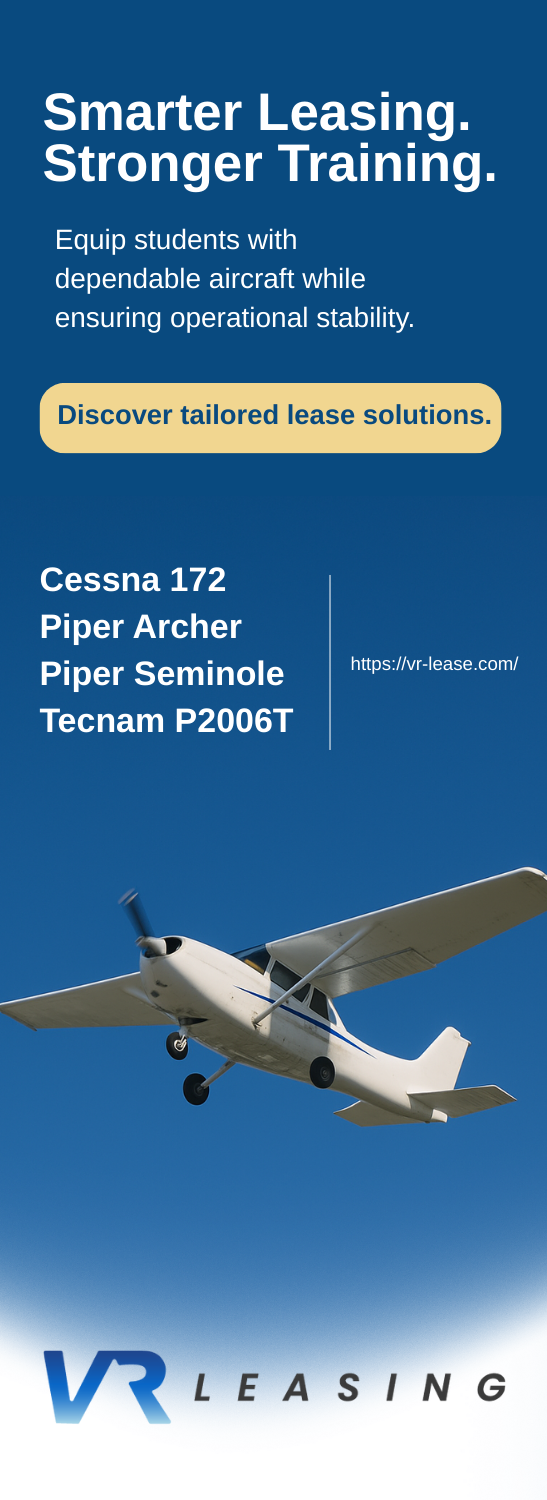Aviation Industry Association of New Zealand Shares Workforce Development Report
New Zealand’s aviation sector is facing workforce shortages that could see the industry become unsustainable without policy change, according to new research from the Aviation Industry Association of New Zealand (AIANZ) and the Ringa Hora Services Workforce Development Council.
The Aviation Workforce Insights* research focused specifically on the pilot and engineering workforce. In the context of pilots, the research shows on average New Zealand needs an additional 100 pilots annually. This gap is anticipated to grow further without any changes to current tertiary policy settings.
Chief Executive of the AIANZ, Simon Wallace, says demand for pilots is increasing by about 2-3% per year and can’t be met by New Zealand’s training system due to the high-cost of study locking students out.
“A major disincentive at the supply end is the cap on student loan borrowing for domestic students that has been set at $35,000 per year since 2013. Back then government agreed to review the cap but this has not occurred.
“Now, with inflation and the cost of living increases, training costs have increased to as much as $120,000 for a two-year course of study. So students are expected to fund at least an additional $50,000 on top of the $70,000 student loan they are limited to.
“The cost is shutting out a lot of young Kiwis aspiring to become pilots. Only those with financial support from families can afford to train.”
Mr Wallace says New Zealand’s flight schools bear the brunt of the shortages due to the typical career progression for trained pilots starting in roles as flight instructors, moving to general aviation and into airlines.
“Flight schools are the ‘canary in the mine’ for workforce shortages. If they are unable to employ the flight instructors they need, they will not be able to maintain even the current supply of new pilots. If current trends continue, flying schools will quickly become unsustainable due to a lack of instructors.”
Further amplifying the situation is the increasing global demand for pilots as the international industry recovers from COVID-19.
“Airlines globally lost pilots during COVID-19 and while passenger numbers are back to normal, pilot numbers are not, and shortages are expected to continue. The shortfall of pilots in North America alone is estimated at 17,000 in 2024 and expected to remain significant over the next decade.
“This international demand could double the rate of our trained pilots leaving the New Zealand workforce to move overseas in the next 10 years. That will drastically accelerate the situation we already face.”
From 2024, workforce entries are projected to grow at 1.4% per year on average, with exits at 3% per year on average, leading to a sustained shortage without intervention.
The long-term aviation industry growth of approximately 3% is likely to translate into similar growth in demand for new aviation maintenance engineers. However, the New Zealand aviation engineering workforce is only projected to grow at a rate of about 1% over the next decade.
“Engineers are crucial to the aviation industry. Without them our planes don’t fly. We know existing shortages are already biting and we are very keen to work with government and the industry to help address this.”
Mr Wallace says the industry wants to work with government on solutions to closing the growing workforce supply-demand gap, including addressing the high-cost of training.
“After more than a decade of working with successive governments to address this issue, we now have the hard evidence to make a case for change. For New Zealand to maintain its aviation services, we need to start by ensuring a sustainable flow of new pilots and engineers into the industry.”
Mr Wallace says the industry also wants to see changes to immigration policy settings allowing international students that have been awarded their commercial pilot’s licence to stay in New Zealand for a period and work as flight instructors.
“This approach could increase supply relatively quickly to reduce the acute shortfall at flight schools. The recently announced Air New Zealand cadet scheme may contribute to reducing the pilot shortage, but won’t solve the problem long-term.
“Ultimately, aviation industry workforce shortages are a major concern for New Zealand. The industry is critical to the economy, connecting us to global markets and providing vital services across search and rescue, agriculture and primary industries, forestry, tourism, energy, security and biosecurity.
“We need government to step up and take this seriously.”
Source: Aviation Industry Association
You may also check our Terms and Conditions for our Content Policy.
Searching for specific information – kindly contact us to see if we can assist you.
Check out the more than 18054 relevant pilot training industry updates here.




